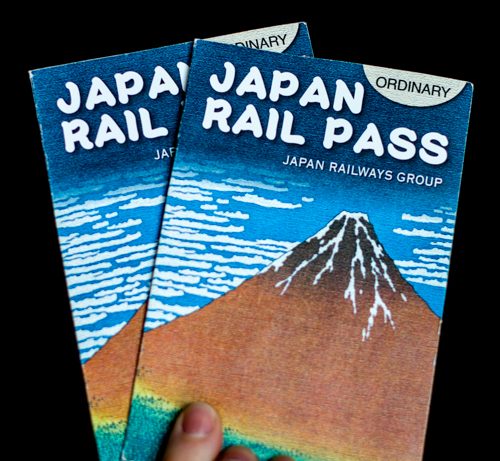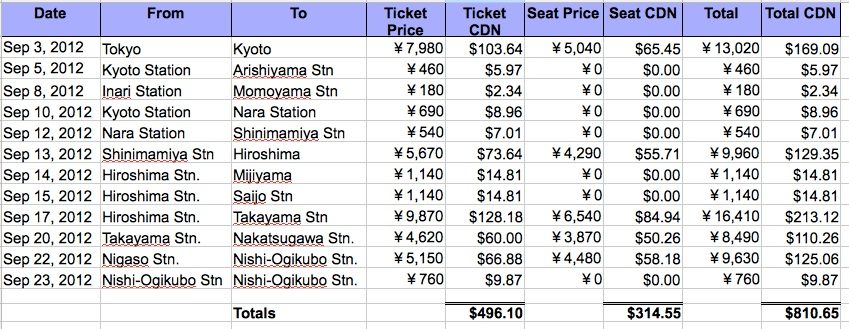Should We Have Skipped The JR Rail Pass?
Train travel in Japan is a treat. Not only do they leave exactly on time but they are quiet, super clean, and comfortable. The extensive network of train tracks links in nicely with an even more extensive network of subway, bus and ferry routes that make it really easy to get pretty much anywhere in the country.
It’s not cheap though.
Luckily the largest rail consortium in the country, JR Rail, offers a pass that can make it significantly more budget friendly.
Getting, and using, a JR Rail Pass is easy. The JR Rail Pass website has everything that you need to know; who is eligible for a pass, how and where to get a pass voucher, pass types and prices, how and where to exchange your voucher for a pass, and how to use the rail system. We found using the pass, and getting around, to be fairly easy. A quick note about the type of pass; don’t bother paying the premium for the Green Pass. We found the Ordinary cars to be more than comfortable and, from looking through the windows, couldn’t actually see how the Green cars were any different!
Is a JR Rail Pass worth it? Well, I’m not entirely convinced that it saved us money.
As we were in Japan for 27 days, and planned to travel around the country for about two and half weeks in between our stays in Tokyo, we opted for the 21 day pass. This cost us $749 CDN each; a good chunk of change out of our budget! (All numbers here are for one person.)
I, of course, tracked every train trip we took as I wanted to see if the pass would pay for itself.
And here’s where I start to doubt whether the pass was worth it.
A ticket on a JR Rail train is a ticket to get on the train; it doesn’t guarantee you a seat. On any train there are ‘Reserved Seat’ cars and ‘Unreserved Seat’ cars. I tracked what it would have cost us just for the train ticket and what the seat reservation cost us.
For the trips we took, the total for ticket cost plus seat reservation was $810.65. The JR Rail Pass cost us $749 so it appears that we saved $61.55.
However I don’t think we needed to reserve seats for every trip we took. We always reserved seats (where possible) because it was a service included in the JR Rail Pass but, most often the ‘Unreserved Seat’ cars we more than half empty and we could have easily found a seat without ‘paying’ the seat reservation fee.
So, if I look at just the ticket price ($496.10) versus the cost of the pass ($749), it appears we lost $252.90!! Each!
To be fair; there were a couple of trips where it might have been difficult and anxiety inducing to find a seat. We travelled on one long weekend that had increased train traveller traffic and on another day something must have gone wrong as a number of trains coming from one direction were significantly late which set most of the travelling public into a tizzy but that we didn’t have to worry about because we had a guaranteed seat.
Why did we not see significant value in the pass and what can you do to ensure it’s worth your money?
We traveled quite slowly; activating our passes in Tokyo to travel to Kyoto and then stayed there for a week. We stayed 3, 4, or 5 days in all of the other destinations we traveled to. The JR Rail Pass is best for those who will be traveling significantly during the time the pass is activated.
If you are considering getting a pass, take a close look at your itinerary – if you will be moving often during the duration of your pass, then it will likely be worth it.
In the end I can’t say we shouldn’t have gotten a pass. Having the pass made it fast and easy to access and use the train system. We never quibbled over whether we would go somewhere based on the cost of the train to get there and we always knew that we would have a seat. Peace of mind and ease of use trump the few dollars we may or may not have saved in the long run.





